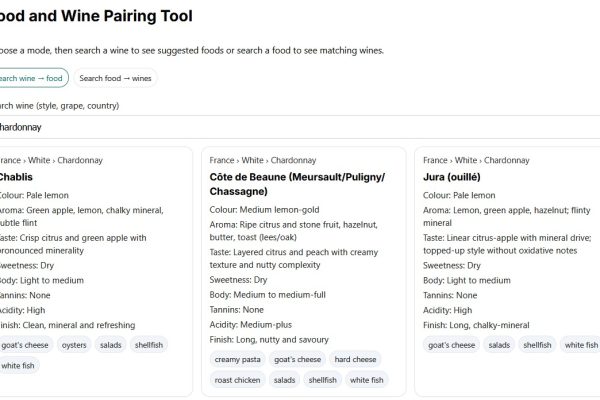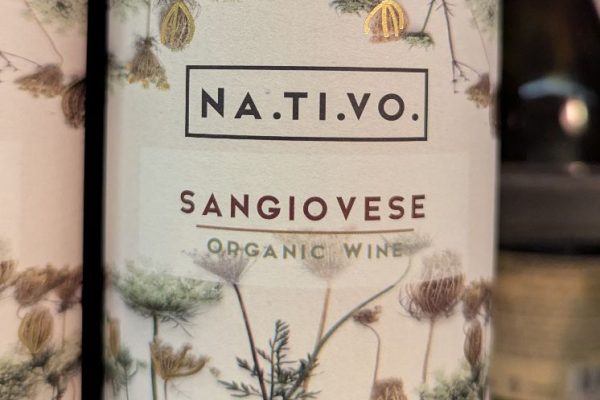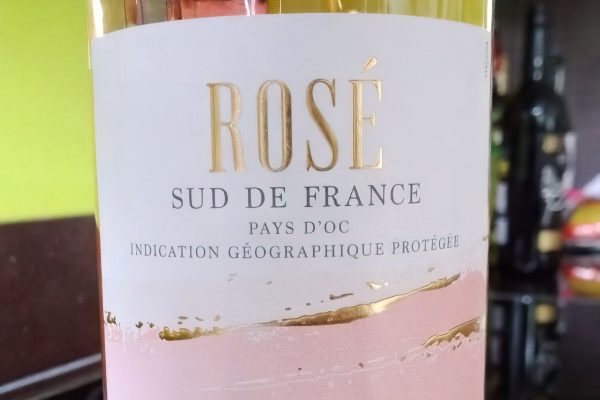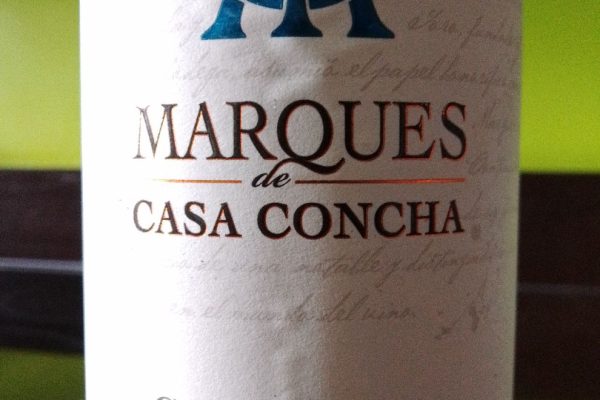
Italy’s wine is an intricate tapestry woven from centuries of tradition, regional diversity and a large number of grape varieties. Each of Italy’s 20 regions offers a unique contribution to the country’s vast and varied wine portfolio:
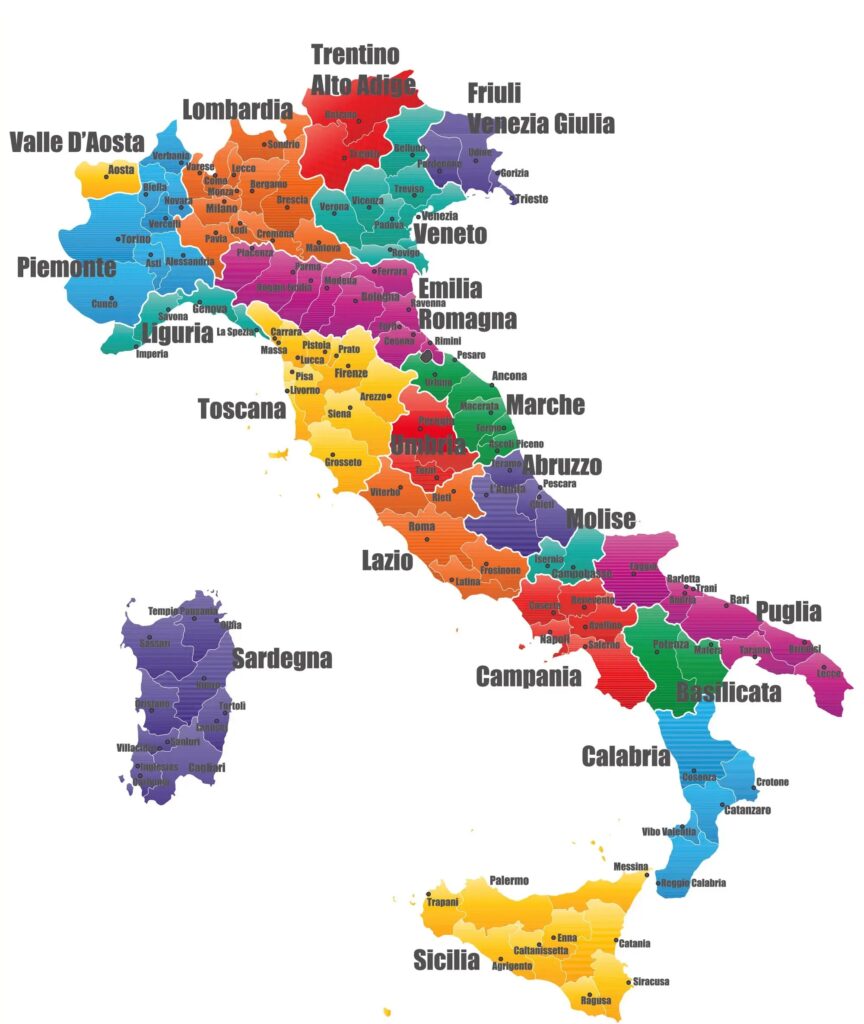
In 2022, Italy was the world’s largest wine producer accounting for nearly one-fifth of the global wine supply. However, in 2023, France overtook Italy, producing a slightly higher volume. These are the main wine regions in Italy:
Northern Italy
Piedmont: Nestled at the foot of the Alps, Piedmont is famed for its noble Nebbiolo grape, which yields the celebrated Barolo and Barbaresco wines. Barolo, often referred to as the ‘King of wines’ is known for its powerful structure, intense aromas of rose and tar and its ability to age gracefully for decades. Barbaresco, while similar to Barolo, is often considered more elegant and approachable younger. Other notable red varieties include Barbera and Dolcetto. Barbera d’Alba and Barbera d’Asti are loved for their vibrant acidity and berry flavours, making them versatile food wines. Dolcetto, with its softer tannins and fruity profile, is often enjoyed in its youth.
For white wines, Gavi (Cortese di Gavi) offers a crisp, mineral-driven experience with notes of lemon and green apple. Another standout is Moscato d’Asti, a lightly sparkling, sweet wine known for its aromatic floral and peach notes.
Lombardy: This region is renowned for its Franciacorta sparkling wines, which rival the finest Champagnes. Made using the traditional method from Chardonnay, Pinot Bianco, and Pinot Nero, Franciacorta wines are elegant, with fine bubbles and complex flavours of citrus, toast and almond. Lombardy also produces excellent red wines, particularly from the Valtellina region where Nebbiolo (locally known as Chiavennasca) thrives in the steep alpine terraces.
Veneto: Veneto’s wine scene is incredibly diverse. Prosecco, made from the Glera grape, is the region’s most famous export, known for its fresh, fruity, and floral character. The best Prosecco comes from the hills of Conegliano Valdobbiadene. In terms of reds, Amarone della Valpolicella stands out with its rich, full-bodied profile achieved through the appassimento process, where grapes are partially dried before fermentation. Valpolicella Ripasso offers a middle ground between the fresh Valpolicella and the robust Amarone, combining freshness with depth and complexity.
Soave, a white wine made from Garganega grapes, offers crisp acidity and flavours of green apple and white flowers, often with a hint of almond on the finish. It can age gracefully, developing deeper, more complex flavours over time.
Central Italy
Tuscany: Tuscany is the heartland of Sangiovese, Italy’s most planted red grape variety. Chianti, particularly Chianti Classico, is the quintessential Tuscan wine, characterised by bright acidity, firm tannins and flavours of red cherry, plum, and spice. Brunello di Montalcino, made from 100% Sangiovese (locally known as Brunello), is one of Italy’s most prestigious wines, known for its power, complexity, and longevity. Vino Nobile di Montepulciano, another Sangiovese-based wine, is slightly softer and more approachable.
The region also produces the so-called ‘Super Tuscans’, which are typically blends of Sangiovese with international varieties such as Cabernet Sauvignon and Merlot. These wines often carry the Toscana IGT designation and are renowned for their quality and innovation. Bolgheri, a relatively new wine region, has gained fame for its Bordeaux-style blends, with names like Sassicaia and Ornellaia leading the charge.
Umbria: Umbria is famous for its Sagrantino di Montefalco, a powerful red wine with bold tannins and deep flavours of dark fruit, chocolate, and spices. This wine has remarkable aging potential. The region’s white wines, particularly those made from the Grechetto grape, offer crisp acidity and fresh citrus flavours, making them perfect for pairing with local cuisine.
Lazio: Lazio, home to Rome, produces a variety of wines, with Frascati being the most well-known. This white wine, made primarily from Malvasia and Trebbiano, is light, crisp, and perfect for enjoying with the region’s abundant seafood dishes. Lazio also produces red wines from Cesanese, a grape known for its soft tannins and bright cherry flavours.
Southern Italy and the Islands
Campania: Known for its volcanic soils, Campania produces some of Italy’s most distinctive wines. Taurasi, made from the Aglianico grape, is often called the ‘Barolo of the South’ due to its structure, complexity, and aging potential. The region’s white wines, particularly those from Fiano di Avellino and Greco di Tufo, offer vibrant acidity and minerality, with flavours ranging from citrus to tropical fruits and honey.
Puglia: This region is famed for its robust red wines, particularly those made from Primitivo and Negroamaro. Primitivo, genetically the same as Zinfandel, produces rich, full-bodied wines with high alcohol and intense fruit flavours. Negroamaro, often blended with Malvasia Nera, offers deep colour, soft tannins, and flavours of dark berries and spice.
Sicily: Sicily’s wine scene is as diverse as its landscape. Nero d’Avola is the island’s most famous red grape, producing wines that range from soft and fruity to powerful and tannic. The Etna region, with its volcanic soils, is gaining acclaim for its elegant, mineral-driven wines made from Nerello Mascalese and Nerello Cappuccio. Sicilian whites, particularly those from Grillo and Carricante, offer bright acidity and complex flavours of citrus, stone fruits and herbs.
Sardinia: This island is known for its robust red wines made from Cannonau (Grenache) and Carignano (Carignan). These wines are rich and full-bodied, with flavours of red and black fruits, herbs, and spice. Sardinia also produces excellent white wines from Vermentino, known for their floral aromas and fresh, zesty flavours.
Italy’s wine regions offer a treasure trove of experiences for wine lovers. From the noble Nebbiolos of Piedmont and the elegant Sangioveses of Tuscany to the robust Primitivos of Puglia and the volcanic wonders of Sicily, each region provides a unique expression of Italy’s rich viticultural heritage.
Read about Italy’s Wine Classifications.








